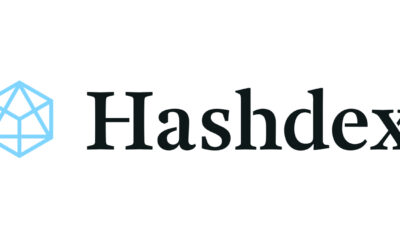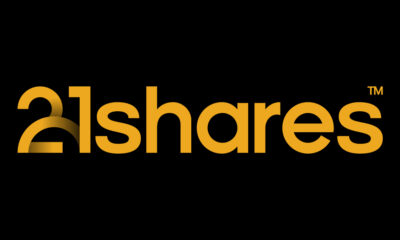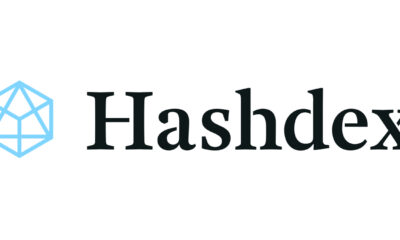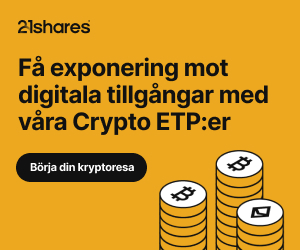Jan van Eck, CEO, and Gabor Gurbacs, Director, Digital Assets Strategy, at VanEck, recently responded to questions regarding the potential and the challenges of the digital assets and current bitcoin boom. The following A VanEck Q&A on Digital Assets includes highlights from this wide-ranging discussion.
What are digital assets?
Digital assets are based on a shared database technology called ”distributed ledgers” and represent a variety of uses. Cryptocurrencies, like traditional currencies, are meant to be a store of value. Bitcoin is the most widely recognized cryptocurrency, and has become known as a form of ”digital gold”.
Not all digital assets are designed to be currencies. Rather, many are similar to shared applications that are either a technology platform or have a specific function. For example, digital assets can track land ownership or music rights, or allocate resources like computer storage or Wi-Fi bandwidth. They can also act as a platform for ”smart contracts”. Tokens work like airline miles or Starbucks rewards — they are only valuable in a specific program or system.
Basically these applications are technology investments. One has to determine if this is the next way of structuring data on the Internet. The appeal is being ”permissionless” (anyone can join), having a lower cost, and not being controlled by a company. Digital assets can proliferate like smartphone apps, resulting in fast growth.
Skeptics view digital assets as opaque. What can they be used for and who will accept them?
Actually, digital assets are radically transparent, with publicly available codes and transactions. Codes can be copied by virtually anyone with the technology and desire to do so. Digital asset users are trackable by public keys (although personal identities are confidential).
Digital currency or coins have countless applications. The use of coins and how they are accepted are typically described on the applicable website, and on sites like Medium, Reddit, and Telegraph. The technology is also arduously explained on YouTube.
How do digital assets have value without cash flow?
Certainly there are investors who value assets based solely on current cash flow. However, assets exist (such as currencies) that are priced based on crowd-perceived value. Precious metals and modern art are obvious examples. Will a Monet, Basquiat or a Degas go to zero?
Bitcoin has attracted a widespread group of investors who, among other views, do not trust central governments. Other than acceptance by millions of investors globally, there is no reason why bitcoin is special.
There is potential that blockchains popularize and generate income streams. However, we are at a very early stage, similar to the early days of the Internet. One must have an aggressive growth risk tolerance to consider investing in early stage companies, much like an angel round or a series A. 1
Are you worried about criminal activity and the notion of untraceable currency?
Any widespread criminal activity is cause for concern. However, immutable, transparent, publicly accessible data records (blockchains) are one of the most attractive features of digital currencies.
The vast majority of digital currencies leave traceable data-crumbs on the web, with some explicitly designed for traceability. The recent dark market busts (AlphaBay, Hansa, and Silk Road) can be directly tied back to the traceability of digital currencies and the breadcrumbs criminals left. Shutting down dark markets is a much more difficult task in a cash-only economy.
Isn’t money supply better controlled by an established, trusted source?
Paper or ”fiat” money has a long history of being devalued by governments: Weimar Germany, the U.S. in the 1970s, Argentina, Brazil, and many other countries today. Contrarily, there is no central power which can arbitrarily decide to create more bitcoin. This transparency alone brings incredible value compared to fiat currencies.
Bitcoin is a slow and volatile form of money. How can it be a real currency?
Bitcoin is slow by design, and is not meant for transactions. Blocks (collections of transactions) need several minutes to process. Bitcoin will never be as fast as Visa or the NYSE which process thousands of transactions per second. Further, bitcoin transactions may result in embedded gains or losses, and therefore tax consequences. Like gold, digital gold is not designed for transactions.
Do you agree that investing in a blockchain makes more sense than in bitcoin?
In a way, this is an odd position. One could argue that bitcoin and cryptocurrencies are way ahead of other blockchain applications, in that they are accepted by millions of investors. Almost no blockchain technologies are widely used . . . yet.
Can one short bitcoin?
One of the theories behind bitcoin’s price rise is that it cannot be shorted. However, we believe this to be incorrect. Investors can short bitcoin on the digital asset exchange, BitMEX. Approximately, $1 to $2 billion of notional bitcoin trades daily on BitMEX.
Is bitcoin a bubble that can go to zero?
No doubt that bitcoin is in a speculative updraft that will end one day. But the huge percentage price increases themselves prove nothing — remember the initial price of Alibaba, Amazon, or Google stock? These companies were started in garages. Apple stock was probably valued at $0.01 per share when it started and rose thousands of percent before its IPO.
Interestingly, if bitcoin were to go to zero, we believe it is unlikely to create systemic financial risk. This is due to the fact that we believe bitcoin exposure of financial institutions is limited to market-making and trading firms. There is greater system risk in the European debt markets, where junk bonds have lower interest rates than U.S. government debt despite debt levels being very high. A disruption in those markets would directly affect the financial system and stock and bond markets.
Should one buy bitcoin?
The decision to buy bitcoin is based on one’s own investment goals, time horizon and risk tolerance. Below are a few ideas to discuss with one’s financial advisor:
- Technology investments are often appropriate for aggressive investors with a long-term time horizon. Digital assets represent a new kind of technology, but they are mainly unproven. Unfortunately, publicly listed stocks are not a great way to own digital assets. The most direct play today is semiconductor stocks which are benefiting from blockchain-related demand.
- Aggressive investors may think about allocating a small percentage of their portfolios to digital assets. For example, hedge fund manager Mike Novogratz has mentioned a 1% to 3% allocation may be appropriate.
- If nervous about missing the run, consider taking a small initial position in digital assets and go from there. Going through the steps of buying bitcoin is a worthwhile learning experience in itself.
- The trading range expectation is wide. We’d be surprised if bitcoin fell more than 80%, but it could get to a trillion dollar market cap — compared to a $7+ trillion market cap for gold — which is still up 4 to 5 times.
Nothing contained herein is intended to be or to be construed as financial advice. Investors should discuss their individual circumstances with appropriate professionals before making any investment decisions.
What should financial advisers do?
Firstly, financial advisors (FAs) should understand the potential of distributed ledger technology. One does not have to like or buy bitcoin, but to wave off the whole thing as a fraud is probably wrong. Large U.S. corporations are investing in blockchain-related projects, and, given that Coinbase has over 10 million U.S. clients, it is likely that an FA’s client has bought bitcoin and is sitting on nice gains.
Secondly, FAs should advise clients to size their digital asset exposure intelligently. Probably zero or a range of over 5%-10% are not right. And better to buy over time than buy all at once. Lastly, FAs should absolutely make sure that clients are reporting digital asset gains on their tax forms.
MVIS CryptoCompare Digital Assets Indices
Performance Comparison
Source: MV Index Solutions GmbH (MVIS®). MVIS is a wholly owned subsidiary of Van Eck Associates Corporation. Data as of December 7, 2017. Not intended to be a forecast of future events, a guarantee of future results or investment advice.
It is not possible to invest directly in an index. Indices are not securities in which investments can be made. Exposure to an asset class represented by an index is available through investable instruments based on that index. MVIS CryptoCompare Bitcoin Index measures the performance of a digital assets portfolio which invests in bitcoin. MVIS CryptoCompare Digital Assets 10 Index is a modified market capweighted index which tracks the performance of the 10 largest and most liquid digital assets.
MVIS does not sponsor, endorse, sell, promote or manage any investment fund or other investment vehicle that is offered by third parties and that seeks to provide an investment return based on the performance of any index. MVIS makes no assurance that investment products based on the index will accurately track index performance or provide positive investment returns. MVIS is not an investment advisor, and it makes no representation regarding the advisability of investing in any such investment fund or other investment vehicle. A decision to invest in any such investment fund or other investment vehicle should not be made in reliance on any of the statements set forth in this document.

 Nyheter4 veckor sedan
Nyheter4 veckor sedan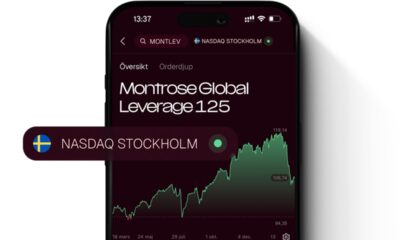
 Nyheter3 veckor sedan
Nyheter3 veckor sedan
 Nyheter4 veckor sedan
Nyheter4 veckor sedan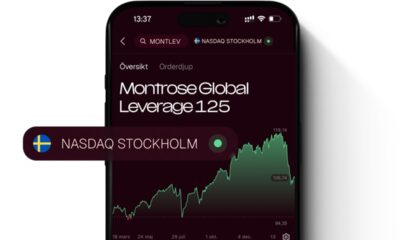
 Nyheter3 veckor sedan
Nyheter3 veckor sedan
 Nyheter3 veckor sedan
Nyheter3 veckor sedan
 Nyheter3 veckor sedan
Nyheter3 veckor sedan
 Nyheter3 veckor sedan
Nyheter3 veckor sedan
 Nyheter2 veckor sedan
Nyheter2 veckor sedan


